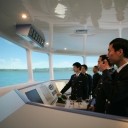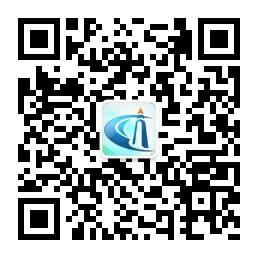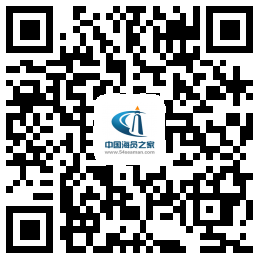转载--Bridge Resource Management Guide
以下是我在做实习生的时候摘录的一些基本知识,大家可以结合中文教材学习
希望各位贤兄有所收获
^_^ 获取晋级 :)P
Bridge Resource Management Guide
A cruise ship grounds due to lack of communication between the bridge watch and pilot. A warship collides with an anchored vessel due to the inexperience of watch officers, while
the commanding officer talks nearby with visitors. A tanker strikes a reef when the master is busy and the junior third mate fails to communicate the ship’s position. Different ships.Different operations. A common failure to use bridge resource management techniques.
What is Bridge Resource Management?
Bridge Resource Management (BRM) is a program designed to ensure effective use of
personnel and equipment during vessel operations. Similar to Aviation’s Cockpit
Management, BRM is designed to reduce errors and omissions in bridge operations through a
*** system of checks and delegation of duties. BRM emphasizes a coordinated effort
among bridge personnel to ensure smooth, efficient, and safe operation of the vessel. The 1995 amendments to the International Convention on Standards of Training, Certification and
Watchkeeping for Seafarers (STCW) includes a requirement for training in bridge team
procedures and a recommendation for training in BRM techniques. BRM is recognized as a
way to prevent incidents.
What are the objectives of Bridge Resource Management?
> To assist the ship master in managing the vessel’s bridge team for each voyage so
personnel are rested, trained and prepared to handle any situation.
> To help the ship master recognize workload demands and other risk factors that may affect
decisions in setting watch conditions.
> To ensure bridge team members are trained and aware of their responsibilities.
> To help bridge team members interact with and support the master and/or the pilot.
Who is involved in a bridge team?
A bridge team consists of those crew members responsible for the safe navigation of the ship.
The team may include licensed and unlicensed crew, both on and off watch. Bridge team
members should occasionally monitor other team members and offer assistance in their areas
of responsibility. This cross checking helps make the team a safe, cohesive, efficient group.
The number of active bridge team members at any given time will be determined by the
prevailing watch condition and the operational needs of the vessel.
What is a watch condition?
WATCH / SHIP’S EXTERNAL ENVIRONMENT*
-----------------------------------------------------------
CONDITION /VISIBILITY /WATERWAY /TRAFFIC
1 /Unrestricted /Offshore /Waters Light
2 /Restricted /Restricted /Moderate
3 /Restricted /Restricted /Heavy
4 /Restricted /Pilotage Waters /Heavy
A watch condition structures the bridge team based on the environment in which the ship
is operating. The environment consists of both internal and external factors affecting the
vessel. These factors include the mechanical condition of the vessel, weather, traffic,
location, and sea state.
The chart to the right gives an example of watch condition criteria.
NOTE: There are many combinations of the above environmental and other factors for setting different watch conditions. These should be set by company policy and supplemented by the master’s orders.
How does Bridge Resource Management structure bridge team duties?
BRM groups bridge duties into three general areas:
> Collision Avoidance—Detecting and avoiding other craft and objects.
> Navigation—Keeping the vessel safely clear of shoal water, close to her intended track,
and on schedule.
> Administration—Routine watch duties such as communications, log keeping, and
supervising watch personnel.
The chart below provides an example of the division of bridge team duties under different
watch conditions.
BRIDGE TEAM DUTIES BY WATCH CONDITION*
----------------------------------------
WATCH / BRIDGE TEAM DUTY
CONDITION /CONN /COLLISION /RADIO /NAVIGATION /OTHER /HELM /LOOKOUT
/AVOIDANCE /COMMUNICATIONS /DUTIES
1 Watch Officer AB
2 Master Watch Officer /AB / AB/OS
3 Master Watch Officer(s) /AB/ AB/OS
4 Pilot Master Watch Officer /AB/ AB/OS
Note: “OTHER DUTIES” may include logbook keeping, equipment checks, and tending the engine order telegraph
and thruster control. Overlap among bridge team members indicates duties that may be shared. Cadets, when onboard, may be used to supplement and complement other members of the team.
*The charts on this page were adapted from the MITAGS “Bridge Team Management Course,” see reference on back page.
How does the bridge team interact with the pilot?
A BRM program should contain specific guidelines for exchanging information between the bridge team and the pilot.
Information is usually communicated through the master. While aboard, the pilot becomes
part of the bridge management team. The master maintains overall responsibility for safe navigation, but the pilot serves as the principal advisor to the master on local conditions.
Master/Pilot Information Exchange
> Items required by the local pilotage authority.
> Language proficiency of bridge team members.
> A copy of a Pilot Card showing the vessel’s condition and maneuvering characteristics.
> Navigation procedures and considerations for the passage including destination, route, planned speed and ETAs, vessel traffic services, and tug escorts or assists.
> Any important local conditions such as weather, tide, currents, sea conditions,and other vessel traffic.
The list at the right represents the type of information that should be exchanged.
In addition to formal training, how can the goals of BRM be reinforced?
At the start of each voyage, the master should hold a deck officers’ conference. At this
conference the BRM policy, the standing orders, and the voyage plan should all be reviewed.
A time for questions at the end of the review will ensure that team members understand how
the bridge will be managed at sea. This conference should be noted in the ship’s log book.
A debriefing at the end of a voyage also provides the master an opportunity to reinforce bridge
teamwork. This debriefing should include a review of voyage plan strengths and weaknesses,
communications, and suggestions for improving bridge team performance. These meetings
should encourage the open flow of ideas, stressing the value of each team member’s
contribution.
What items should a Bridge Resource Management Program include?
A BRM program should include the following:
> Establishment of watch conditions based on internal and external operating factors.
> Clearly defined bridge team assignments and duties for each watch condition, including
goals, objectives, and priorities.
> Responsibility, station, and communication guidelines for bridge team response to
emergencies (to include pollution incidents) and/or equipment failures.
> Procedures for navigating with a pilot, and guidelines for communication among bridge
team members and the pilot.
> Team leadership concepts, including delegation of duties, responsibility, and authority.
> A company policy for the use of checklists and standing orders.
> Procedures for turning over the watch to oncoming bridge team members.
> Comprehensive voyage planning.
What is a voyage plan and what role does it play in BRM?
A voyage plan is a written navigational guide used by the bridge team to determine intended routes, to identify potential problems or hazards, and to adopt measures to ensure a safe passage.Through voyage planning, risks are appraised, demands on the bridge team are anticipated, and watch conditions are considered in advance.
The list at the right identifies items that should be considered when creating a voyage plan.
Voyage Planning Elements
Review or consider:
> Charts and navigational publications.
> Waterway characteristics, navigational obstructions, and water depths.
> Notices to mariners and nautical publications.
> Applicable regulations, including Vessel Traffic Service (VTS) requirements.
> Predicted weather, currents, and tides.
> Expected vessel traffic.
> Internal and external communication procedures.
> Pilotage requirements.
> Tug escort or assist services.
> Emergency procedures.
> Engineering conditions.
What role should the owner/operator play in BRM?
One of the most important roles an owner/operator plays is to provide training for bridge
teams. An owner/operator should also:
> Develop and standardize safe bridge practices and procedures throughout the fleet.
> Set manning levels for the bridge based on watch conditions.
> Establish responsibilities of bridge team members based on watch conditions.
> Ensure company safety, operations, and environmental protection policies are followed.
> Provide assistance to assure compliance with applicable international, federal, state, and
local rules and regulations.
本人有pdf格式的资料,转成纯文字帖与此希望方便供某些兄弟借鉴。
-----------------------------------------------------
2nd Officer
Ever-student from Dalian Maritime University
Be proud of DMU
请登录后发帖

 联系我们人工客服
联系我们人工客服



















 :1391995811
:1391995811

